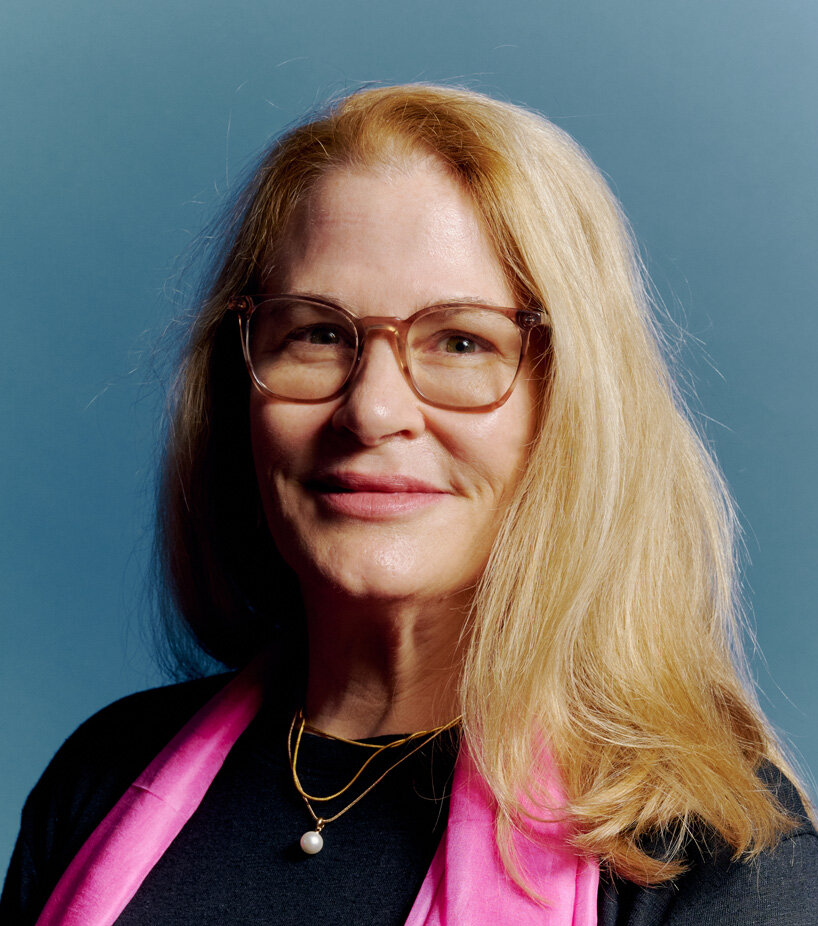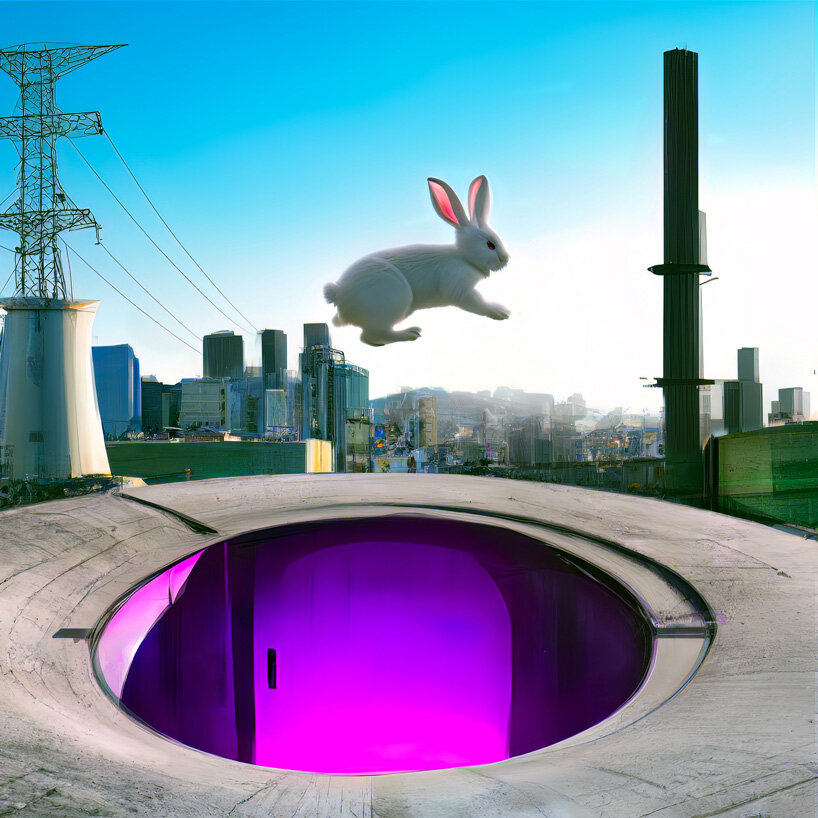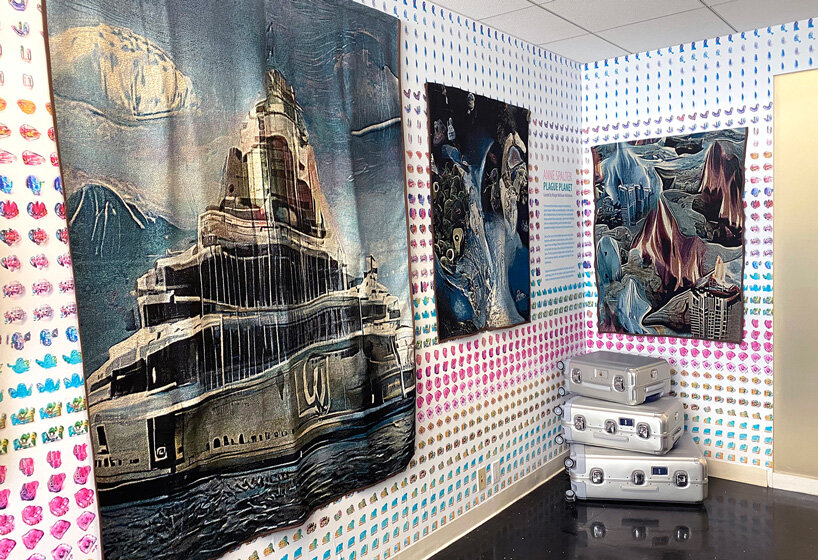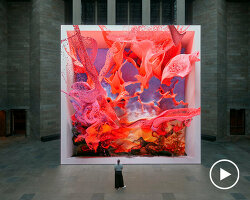nft art day zrh: demystifying emerging technologies & digital art
Amid the rapidly evolving contemporary art sphere, innovative technologies are continuing to reshape the creative landscape with generative algorithms, AI programs, VR, AR, and more novel mediums for artistic expression. While much of the traditional art world has kept a safe distance, a vibrant and inclusive creative culture is thriving within the digital realm and notably, the blockchain-powered crypto world. Among this transformative evolution, mixed-media artist Anne Spalter has been long exploring the intersections of art, technology, and now, the expanding landscape of Web3. Over the course of her 40-year career as a prolific creator and educator, Spalter has embraced the technologies of the day as they come and has built a diverse portfolio of works that range from hypnotic fractal renderings and algorithmic animations, to dystopian videoscapes that fuse natural wonders with architectural marvels. ‘Once I went over to the dark side — creating digital art — I did that for decades. Each time a new technology has come out, I’ve been inspired to try it,’ she tells designboom during our interview.
Alongside other key players in the field — from artists, to collectors, critics and curators — Anne Spalter participated at the second edition of NFT ART DAY ZRH on June 10-11, 2023. Accelerating global cultural conversations around the convergence of emerging technologies in the traditional art sphere, the conference hosted a series of presentations and panels to demystify conceptions around Web3 through the lens of NFTs and blockchain whilst building bridges with the traditional art world.
As media partner of the conference, designboom spoke with Spalter to delve into her artistic processes, her foray into NFTs and AI art amid the crypto crash, and her thoughts on the evolving landscape of digital art. Read on for the full interview below, and see more of our coverage here.

Anne Spalter portrait | all images courtesy of Anne Spalter
interview with anne spalter
designboom (DB): Over the course of your career, how has your experience of working with digital mediums evolved as new technologies continually emerge?
Anne Spalter (AS): I actually started as a traditional artist, I studied painting! I hated the idea of digital art and using the computer to create art. I thought, ‘Why would anyone want to use a computer to create art?’ It wasn’t until after I graduated college, I was working in New York City at a bank in a little cubicle, not having access to a studio space, that I began to use the computer regularly to make art. And that was because there were some graphic design programs installed on my computer. And then when my boss came by I clicked on Excel.
Eventually I realized I should not be in banking! And I went back to graduate school, back in painting. But I realized there were these really powerful things that you can do with the computer that I began to miss! Like changing color indefinitely without ending up in a muddy green, and erasing or ripping your paper. I respected that the computer was such a powerful visual machine and I wanted to learn more about it. But there weren’t any classes at the Rhode Island School of Design where I was in graduate school, and the Head of Graduate Studies suggested I teach one. That’s why I’ve been trying in-depth to learn about the field, the technical and historical concepts, who pioneered it, and what could be done with it. In teaching, looking for resources, and not finding what I needed, that inspired me to work on my book ‘The Computer and the Visual Arts’ which took over five years to write.

Buzz
DB: How have you experimented with blockchain art and the Web3 sphere yourself?
AS: Once I went over to the dark side — creating digital art — I did that for decades. Each time a new technology has come out, I’ve been inspired to try it. I saw a friend’s work posted on Twitter, and she said she was using artificial intelligence through a web-based platform called Playform, which is a GAN-based platform. So I wrote in to see if I could be a beta tester and got on their program. I just began playing around and I was like, ‘wow, this is really different, and very exciting,’ and I became addicted to it. And then text-to-image tools came out. And they’re just so much fun, I became really enamored with them.
DB: Can you talk us through your fascination with the ‘modern landscape’ and how digital mediums have helped you explore that?
AS: Throughout all the different mediums in my artistic practice, whether it was charcoal drawing, or oil paint, or the computer, video — anything that I’ve used — the content has always been really consistent. It’s always been the same fascination with modern landscape, technological landscape, and a current and futuristic leaning towards a kind of Armageddon — but not a depressing Armageddon. My new tagline is ‘Happy Apocalypse.’

Quiver and crew
DB: Do you have any projects in the works at the moment that you can tell us about?
AS: Yes, I’ve been working on a series and some of them are actually on display right now at Expanded Art in Berlin. I’m calling them Inflatable Metaversal Friends, and they’re creatures that appeared just while using the text-to-image AI. They’re somewhat friendly, somewhat menacing creatures that just started appearing in the landscapes. They’re avatars, friends, that were keeping me company.
During the pandemic, like everyone else, I spent so many hours in the virtual space of the screen and almost feeling like I’m living in there. That’s the ultimate modern landscape — you’re living inside your screen. And who are you in there? Especially with the NFT world, people don’t know who you are. You’re communicating with people with these strange handles, and it’s just this very bizarre space, and I think it’s challenging everyone’s identities. Who are you in these different spaces and social media environments?
So it’s a project about that virtuality, the screen, and going back and forth using AI. These friends look like big, inflatable balloon people. Then I’m making actual inflatables as well, based on them. So they’re virtual, but then they’re coming back into the real space. They’ll be seven feet tall in real life, I feel like they should be a little bigger than life size.

Freddy
DB: Can you describe your process of creating through text-to-image AI?
AS: It’s an iterative and curative, creational process. You type something, you get an image, and you think: ‘Oh, that’s cool, what if I tweaked it like this?’ And then you get another image. And you repeat, repeat, repeat. That’s how you end up with something that looks like your work. Even though I’m typing, the end results look like my work and my style of work. That was a little bit surprising to me. I think it’s true of artists I know who are using this method — it looks like their work. Even if you’re painting, there’s curation. You make a brushstroke, you look at it, you make another one, you look at it, and you’re constantly editing and curating what you do. It’s sort of a similar process, even though the medium is very different.
I think it’s hard for people to understand and a lot of the media makes it sound like you type in a phrase, and boom: you get a perfect image, and it’s done, and it’s going to replace artists. But it’s nothing like that. It’s much more like working with any other medium where you start out with an idea and you do something and it doesn’t work, and you adjust. And it takes hours or days or weeks to get a result that you’re happy with.
DB: There is a lot of mysticism and skepticism towards this realm. Despite this, how do you think blockchain technologies have positively impacted the cultural landscape of the art world?
AS: I don’t think blockchain has influenced the art world at all. The traditional art world seems to have kept itself extremely separate from the blockchain art world. I was hoping there’d be more overlap. They have stayed really separate. I think the collector base is very separate. The artists are very separate. There’s a lot of fantastic art going on. There is a great community in the NFT space. I’m on Instagram and Twitter, as many artists are, and in my Instagram feed, there’s nothing about NFT.

Plague Planet tapestries
DB: How do you feel that NFTs have impacted the way people access, perceive, and communicate via art?
AS: I think people in the blockchain space are having a really great experience. They often came in through very non-traditional pathways — and never thought they could make a living doing some sort of visual production — and then found that they could do this thing that was lucrative. They’re paying off their loans, they’re paying off their parents mortgages. It’s not as frothy a market anymore, but there are still people doing very well. And there’s a lot of support, community, and communication. If you sell something, your collector can write to you directly, and vice versa. There is an immediacy and a frictionless-ness about it that’s really wonderful. You can buy something at 2 in the morning, you could talk to that collector right away, they receive the work right away. The timing of it is completely different. And you have the instant gratification like Amazon, except even faster.
DB: Despite the crypto crash, do you see any longevity in ‘NFT art’?
AS: I think there’s so many cool things about the space. So there are issues with security, with scans, and things that go on in the space that are a big problem. And the lack of collectors from the traditional art world I think is an issue. But there are many wonderful things about it, just the technology of it makes it so much easier to buy and sell artwork. The traditional art world is so antiquated in its economics and the way its marketplace functions, that it’s very ripe for disintermediation. So whether this will be it or not, I don’t know. But there are many great things about it that I hope will be a lesson for the traditional art world.

Dixie
DB: What lessons could it teach?
AS: Like making it easy to buy artwork. If you go to a gallery, you walk in, you feel awkward. You might look at the individual artworks and not even see a title or any information. You have to go to the front, get a list, maybe scan a QR code, and then maybe you get the title of the work. You don’t get the price. You have to go back up to the front end. You have to ask someone for a price list. Imagine a store where you don’t know the prices of anything. And there’s some sort of weird social interaction. And then maybe the price for you is not the price for someone else. Also, depending on the level of the gallery and the artist, maybe you can’t even buy those things because they don’t think you’re someone that they’re going to sell to. If you list your NFT for sale, anyone can buy it. Anytime. You go online, it’s 3 AM, you see a piece of artwork, you love it, you buy it, and you own it immediately.
All those things that I talked about are fantastic things that the traditional art world could benefit from. I do believe that artists should get royalties on their secondary sales. So I hope that this comes back in the NFT world. And then there are also recurring efforts to have that happen in the traditional art world. It would be great if those became successful. It would be great if more people could make a living doing visual work. We live in a very visual society, especially with the computer and all the digital tools. We are carrying around an amazing camera with us all the time, and we have these super powerful visual tools to communicate. So if more people can be engaged in the visual economy in a meaningful way, I think it’d be a very positive thing.

Zelda

MTArts installation

still from Portals and Passages

Unconstructed Dream Space, still
project info:
conference name: NFT ART DAY ZRH
speaker: Anne Spalter
conference location: Auditorium Kunsthaus Zürich
conference date: June 10-11, 2023
all conference participants: James Bridle, Brian Droitcour, Luba Elliott, Alex Estorick, Sabine Himmelsbach, IX Shells, Dr. Omar Kholeif, Mario Klingemann, Sandra Nedvetskaia, Hans Ulrich Obrist, Operator, Kenny Schachter, Anne Spalter, thefunnyguys (Le Random Collection), and Valerie Whitacre
art interviews (152)
artificial intelligence (401)
digital art (139)
NFT (non-fungible token) (104)
NFT ART DAY ZRH (7)
PRODUCT LIBRARY
a diverse digital database that acts as a valuable guide in gaining insight and information about a product directly from the manufacturer, and serves as a rich reference point in developing a project or scheme.


























